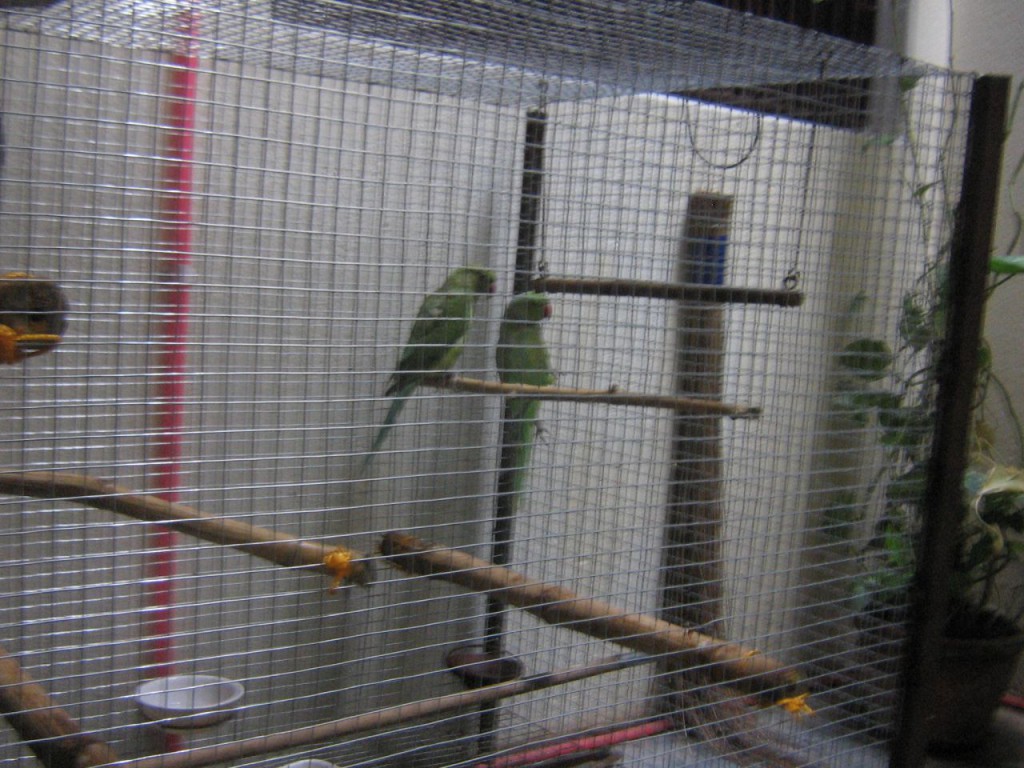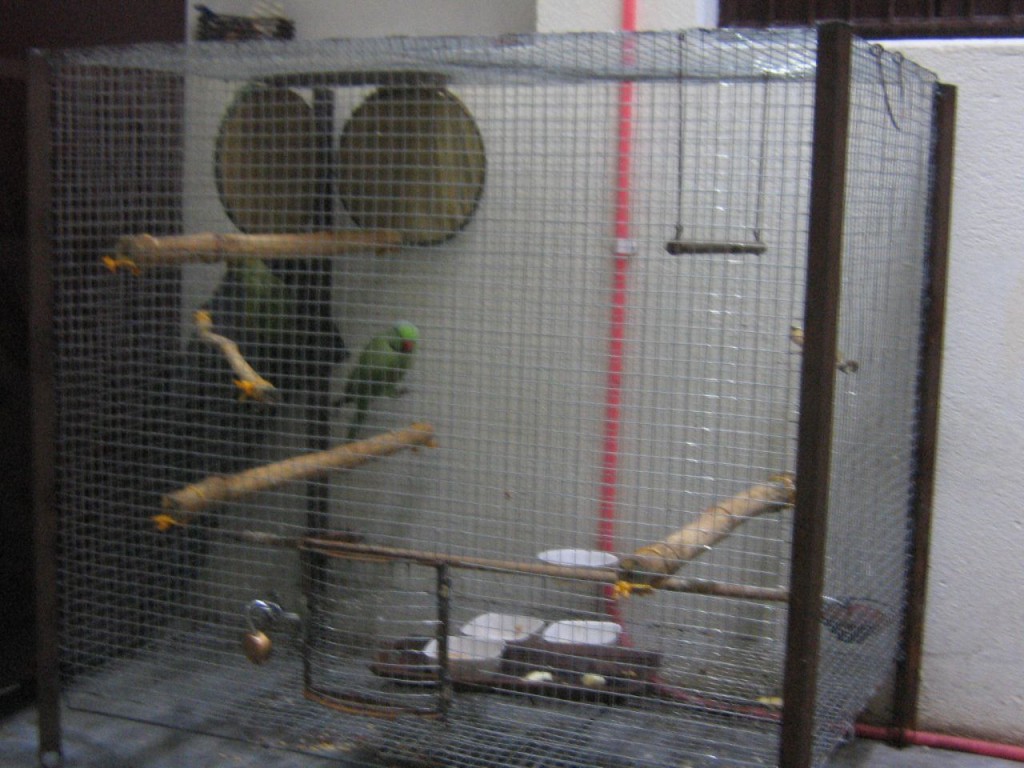I traveled to Nepal with my friend Babu to attend the Kathmandu Gay Pride, and it was truly an unforgettable experience. We took a bus from Varanasi to Sonauli, catching the last one at 8:30 PM. It was an overnight journey, and the bus ride was quite uncomfortable. The road was terrible, and I couldn’t sleep at all. We finally arrived at the Sonauli border at 7 AM and took a pedal rickshaw to cross. I was carrying some electronics like a video camera, photo camera, and voice recorder, and I wanted to declare them at the Indian customs office.
When I told Babu about declaring the electronics, he laughed and said it wasn’t necessary. However, I had experienced issues before during my first trip to Nepal in 1996. Back then, I was traveling with my family. We had a camera, which we declared at the Sonauli border and received a receipt for. Unfortunately, we lost it while in Nepal, and on our return, customs checked our baggage, found the camera, and claimed it wasn’t allowed to bring electronics from Nepal to India.
We were shocked when they insisted it wasn’t our camera, despite having a receipt. The customs officers were simply looking for a bribe. We ended up giving them some money to be allowed to leave. This experience stayed in my mind, which is why I didn’t want to take any chances this time. When I approached the customs office at the Sonauli border to declare my electronics, the officers laughed and said, “You’re very smart.”
I declared my items and got a receipt, but they again asked for a bribe for issuing it. I questioned why they were asking for a bribe now, and one officer explained it was just the system. I offered Rs. 20, but he insisted on at least Rs. 50. In the end, I gave him Rs. 40 and received my receipt. I had hoped that by declaring my electronics in advance, I could avoid any problems or corruption, but it seemed unavoidable. After obtaining the receipt, we crossed the border into Nepal.
Although Nepal had been a Hindu country until a few years ago, I expected its culture to be similar to India’s. However, there was a noticeable difference right at the border: different-looking people, clothing, more working women, and different vehicles. It felt like a completely different country. The one similarity was the presence of touts trying to exploit tourists. Many approached us immediately to sell bus tickets to Kathmandu and hotel rooms.
Babu warned me that these touts often lied. They claimed a bus would leave within the hour, but Babu assured me that buses typically don’t leave before 4 PM. I was skeptical until my rickshaw driver confirmed it. There are direct buses from the Sonauli border to Kathmandu, but only in the early morning or late afternoon. Luckily, Babu was with me, and I avoided the touts. We took a bus from the Sonauli border to a place called Bhairava, which was only about a 30-minute ride.
Bhairava is the largest bus station near the Sonauli border, and there are regular buses to Kathmandu. We arrived by 9 AM and learned that a bus would leave at 9:30. I noticed something peculiar: Nepal has no government bus service, so all buses are private, with no fixed fares. I wasn’t aware I was supposed to bargain for the bus fare, but Babu handled it. The counter initially quoted us Rs. 450, but we ended up paying Rs. 350.
The bus departed at 9:30 but was stopped 15 minutes later by the army. I thought they would check everyone, but they only looked around and inspected a few bags. Surprisingly, they weren’t just searching for weapons; they were also checking for potatoes and sugar. I laughed when Babu explained that the authorities wanted to prevent smuggling these items from India, where they are cheaper. It was interesting to learn about the trade dynamics.
Nepali buses were cramped, with little legroom. It rained continuously from Sonauli to Kathmandu, and water even came in through the windows despite being closed. I was soaked for over 12 hours on the bus. The nature in Nepal was breathtaking—clean rivers, fresh air, and lush greenery. I noticed that there seemed to be more working women in Nepal than in India. Many shops were run by women, and they appeared to be in better circumstances than their Indian counterparts.
Nepal appeared more progressive regarding women’s rights compared to India. Women traveled alone, worked in offices, ran shops, and even drove auto rickshaws. It was refreshing to see. I was particularly struck by the number of alcohol shops run by women—something I had never encountered in India. I met a female shop owner and struck up a conversation with her.
I asked her if she felt safe managing an alcohol shop alone and dealing with often-drunk male customers. She replied that running the business was no different from how any male family member would manage it. When I inquired about societal attitudes towards women in alcohol sales, she mentioned that Nepali society is quite progressive in terms of women’s rights. She had never visited India but had seen it on TV, and she didn’t seem particularly excited about it.
I explained to her that it’s nearly impossible to find women selling alcohol in India and that there are fewer working women overall. She was aware of the situation and pointed out that many Indian families in Nepal restrict their women from working outside the home. When I asked what Nepali people think of this, she candidly said, “Honestly, we think Indians are crazy and backward.” I was taken aback, but it’s true that, in terms of women’s rights, India has a long way to go compared to Nepal.
The nature throughout Nepal was stunning. It was clear that the environment remains largely untouched—thick jungles, beautiful rivers, fewer industries, less traffic, and majestic mountains. I truly enjoyed the natural beauty of Nepal. I noticed only five large factories during the entire bus ride from Sonauli to Kathmandu, and two of them were Indian factories. While this means less pollution, it also means fewer jobs, which contributes to poverty.
Poverty in Nepal struck me deeply. Along the Sonauli-Kathmandu highway, I saw many homes and people, but what was surprising was that many seemed to be doing nothing—just sitting around and chatting. It felt like they had no work to occupy them. I encountered numerous children selling water bottles and snacks along the road. Nepal has suffered significantly from political instability in recent years, which appears to be a major cause of its poverty. The Nepalis I spoke with seemed discontent with the political situation.
Finally, we arrived in Kathmandu around 8 PM, and it was still raining. I had read about a neighborhood called Thamel, known for its hotels, and I wanted to stay there. Babu warned me that locals often give wrong directions, so he suggested asking someone at an Indian-run shop. We found a paan shop, bought a few items, and asked for directions. Fortunately, the shopkeeper was helpful, and after about a 10-minute walk and a few inquiries, we made it to Thamel.
Thamel was bustling with hotels, making it a popular spot for backpackers. We checked several hotels, but the prices were steep. Babu said we could find a room for around 500 NR, but none offered rates below 1000 INR. Eventually, we reached Annapurna Hotel, where they wanted to charge us 800 INR per night. I mentioned I was a government-approved tour guide in India, and they agreed to give me a room for 500 INR.
The hotel initially seemed nice, but we soon discovered that the pillow covers and bed sheets were used, the cable connection didn’t work, and the telephone was dead. We complained, and they promised to fix everything by the next morning, but that morning never came before we left. I wasn’t there to enjoy luxury, watch TV, or make calls from my room, so I didn’t mind too much. We went out for dinner, but most restaurants were closed by 8:30 PM. We eventually found an open restaurant and had our meal.
I had read various articles about nightlife in Nepal, including dance bars and massage centers. Some claimed it was safe, while others warned of potential dangers. Many articles described how people would spend significant money at nightclubs and face misbehavior. I also read about underage kids involved in the sex industry. Curiosity got the better of us, and we decided to visit at least one nightclub in Kathmandu.
While walking around Thamel, I noticed numerous massage parlors. As we passed one, a boy who appeared to be about 15 approached me and asked what I was looking at. I explained I was merely checking out the advertisements. He insisted that I was interested in something special. I clarified that I wasn’t looking for anything like that. He continued to follow us, offering young, beautiful girls at low prices. There were many pimps lurking around, watching tourists.
I managed to return to my hotel safely. The next day, we worked for a while, explored, and did some shopping. I missed vegetarian Indian food,


















































